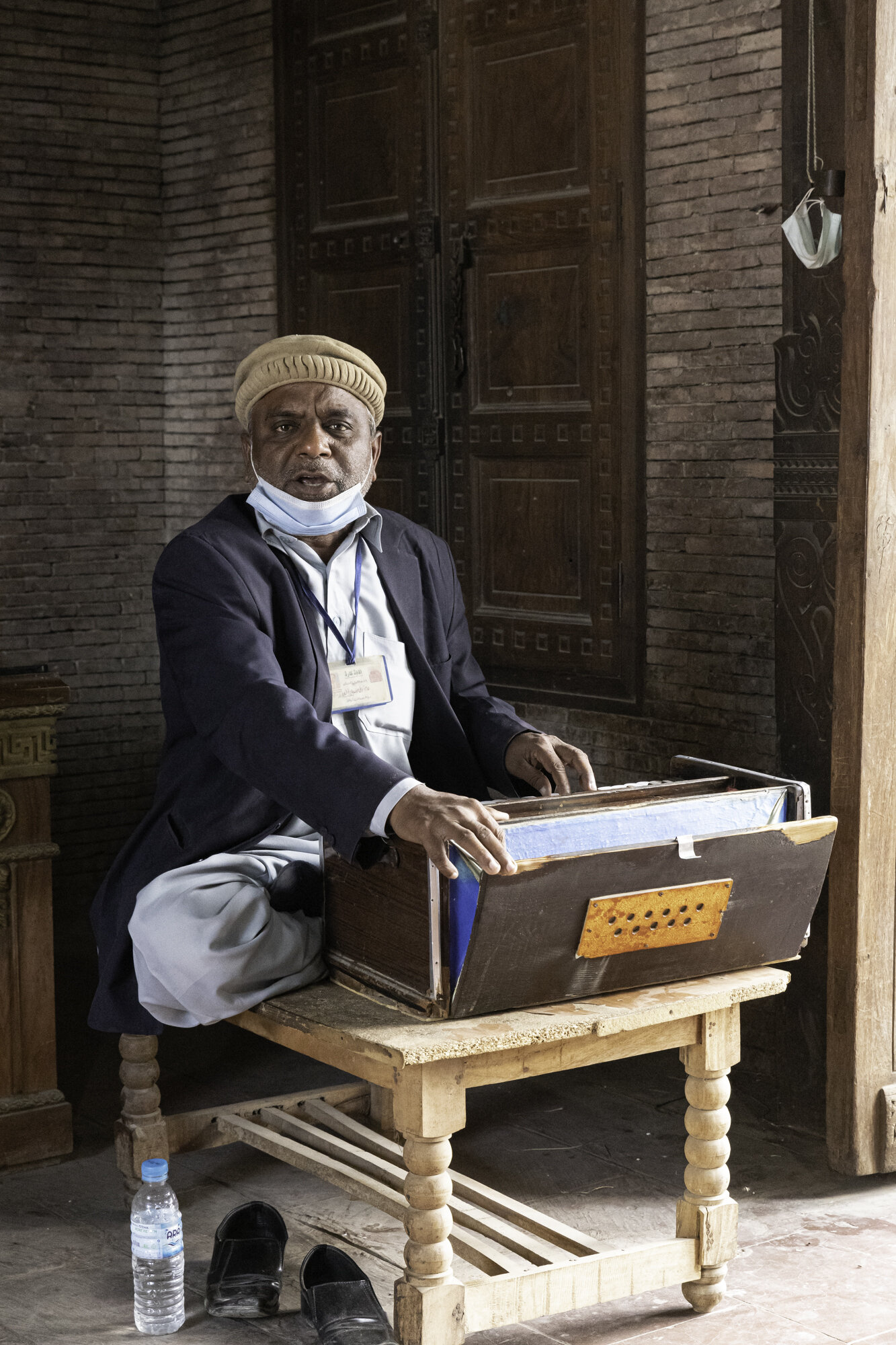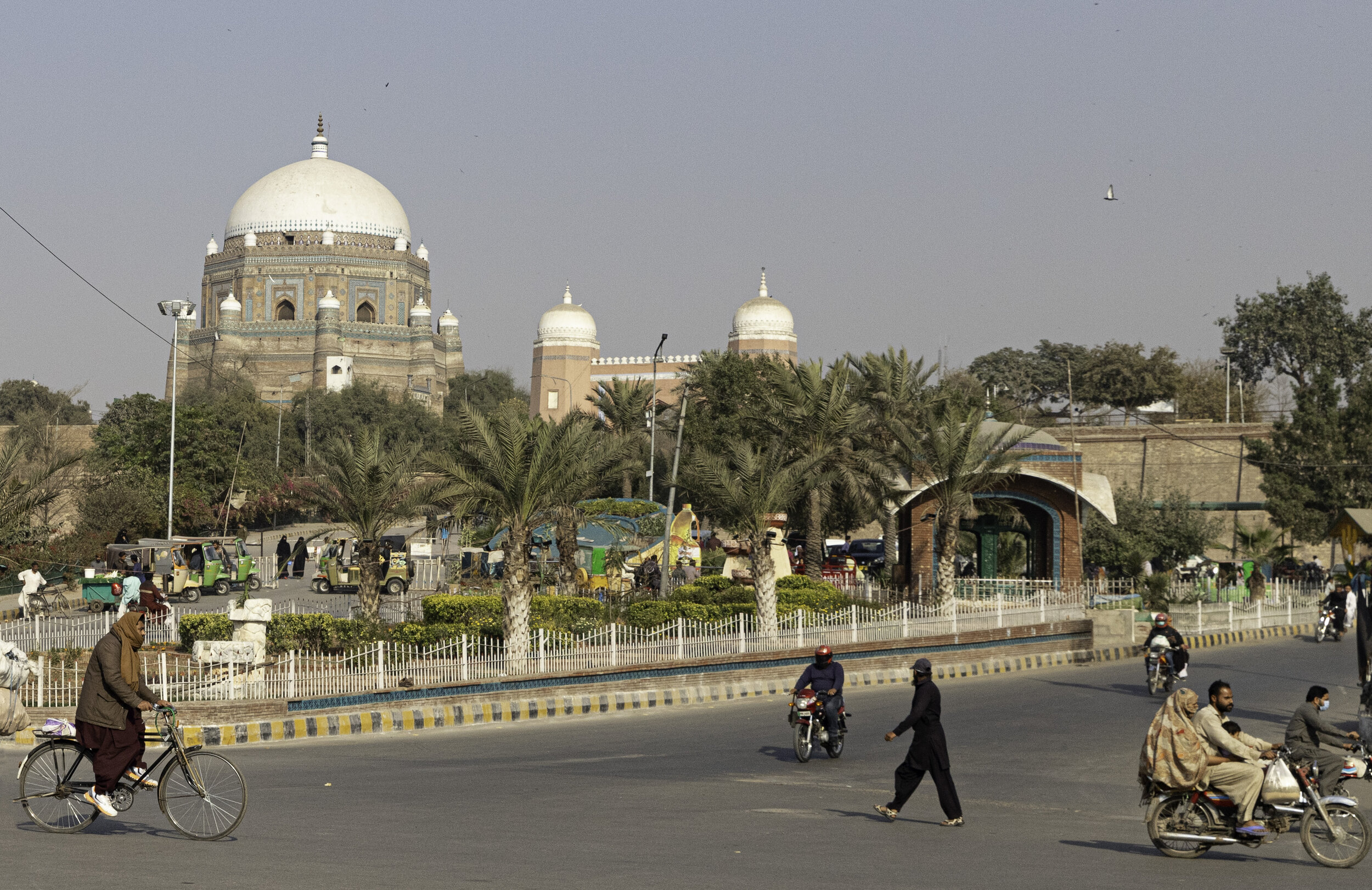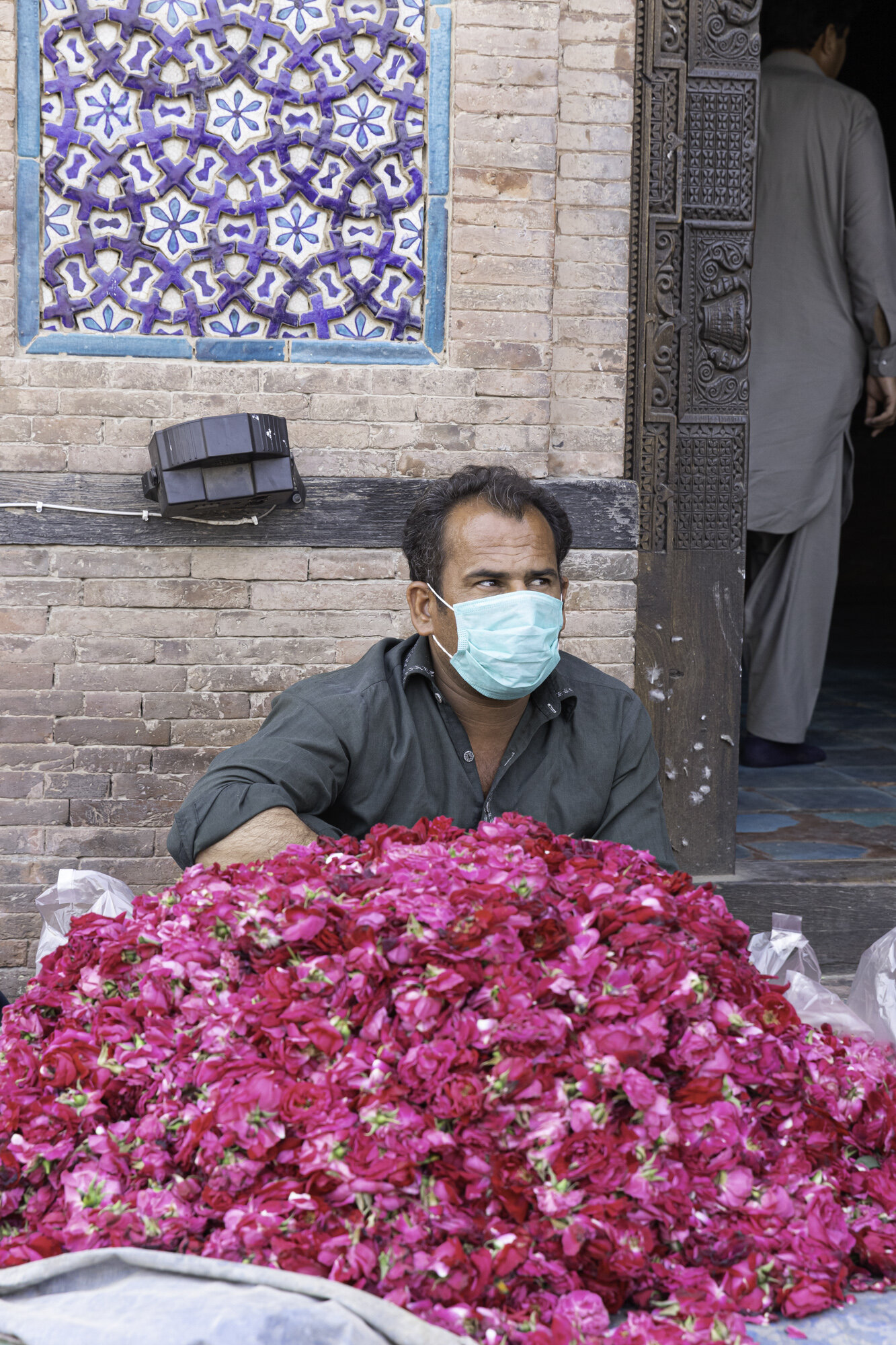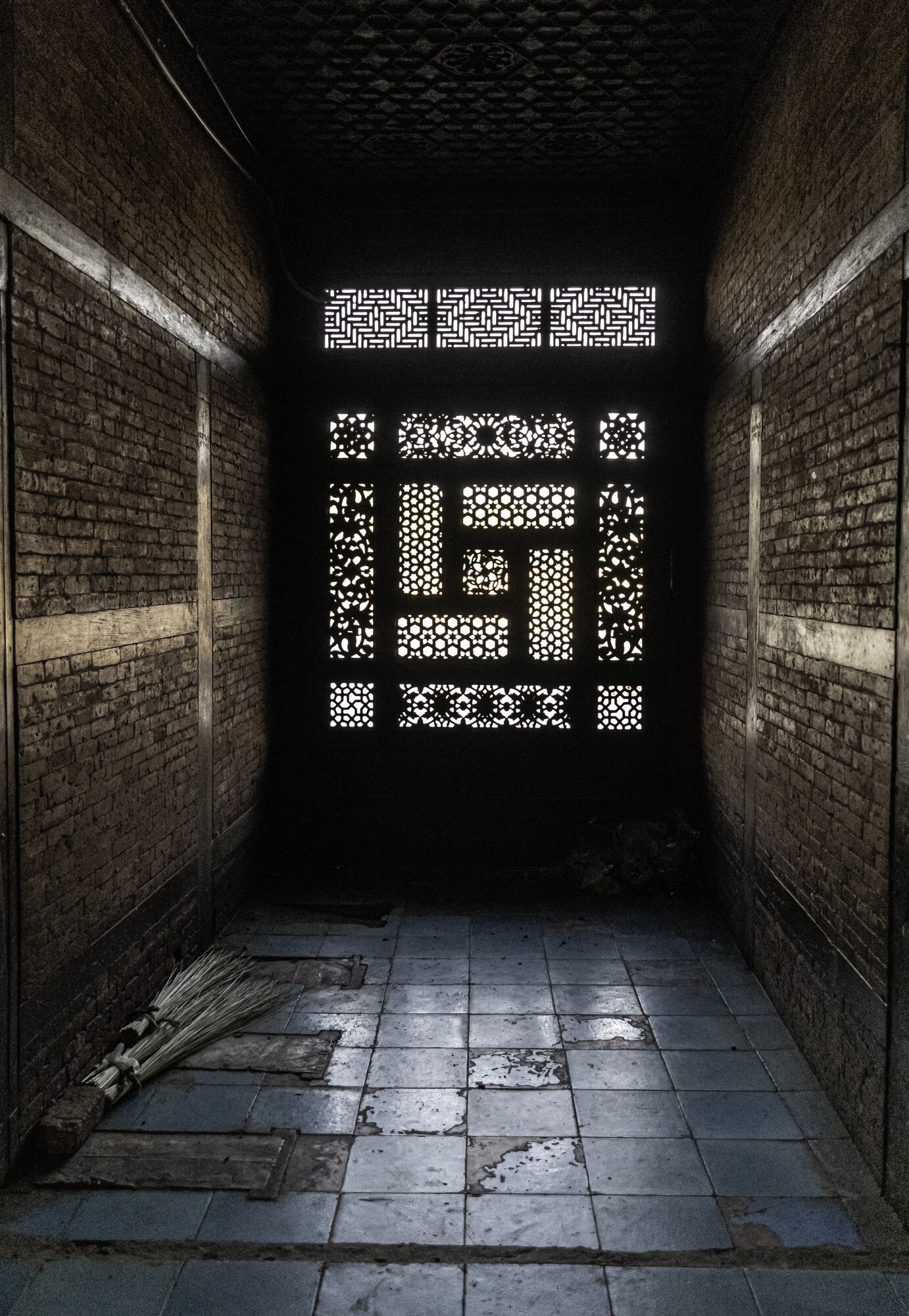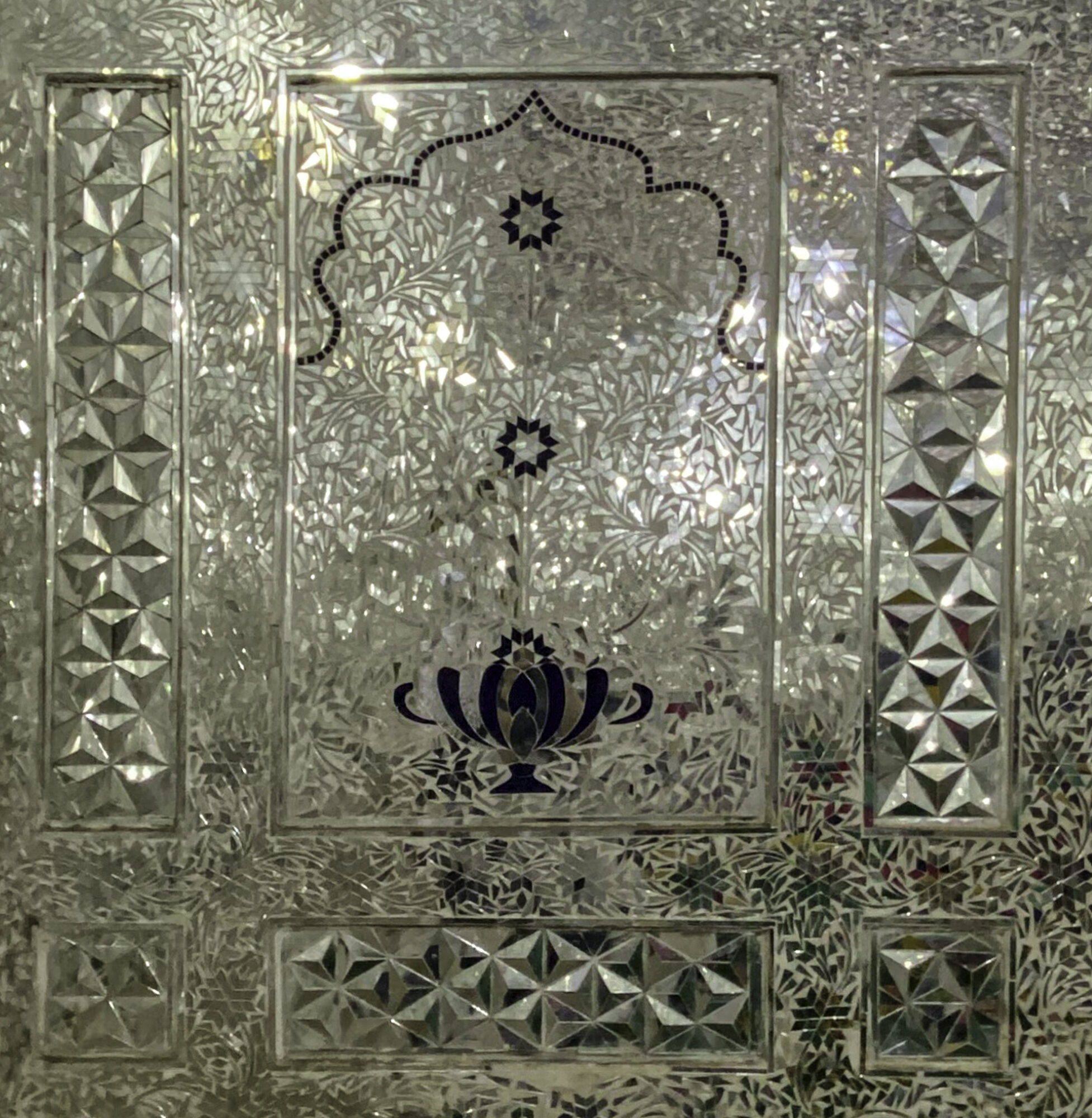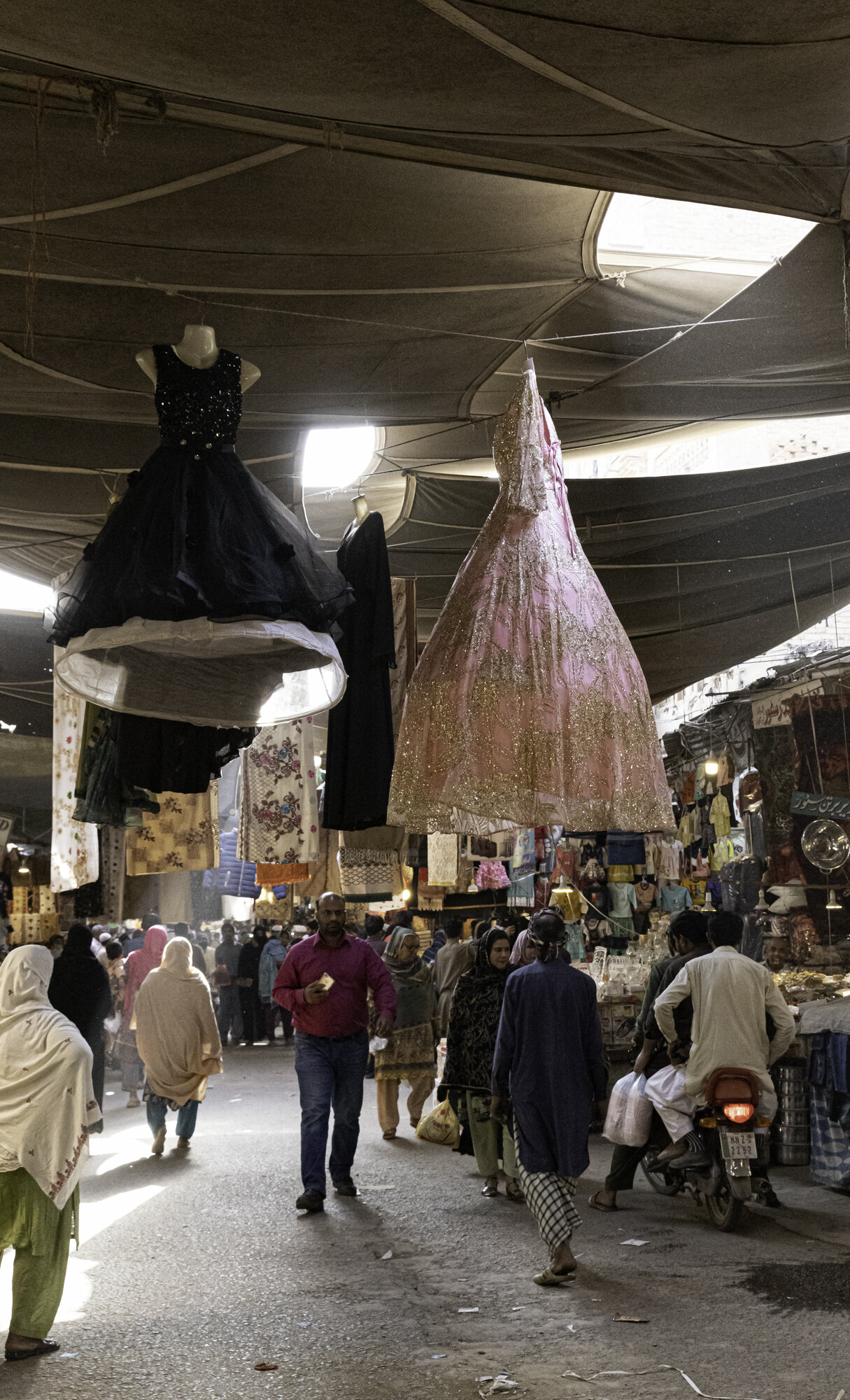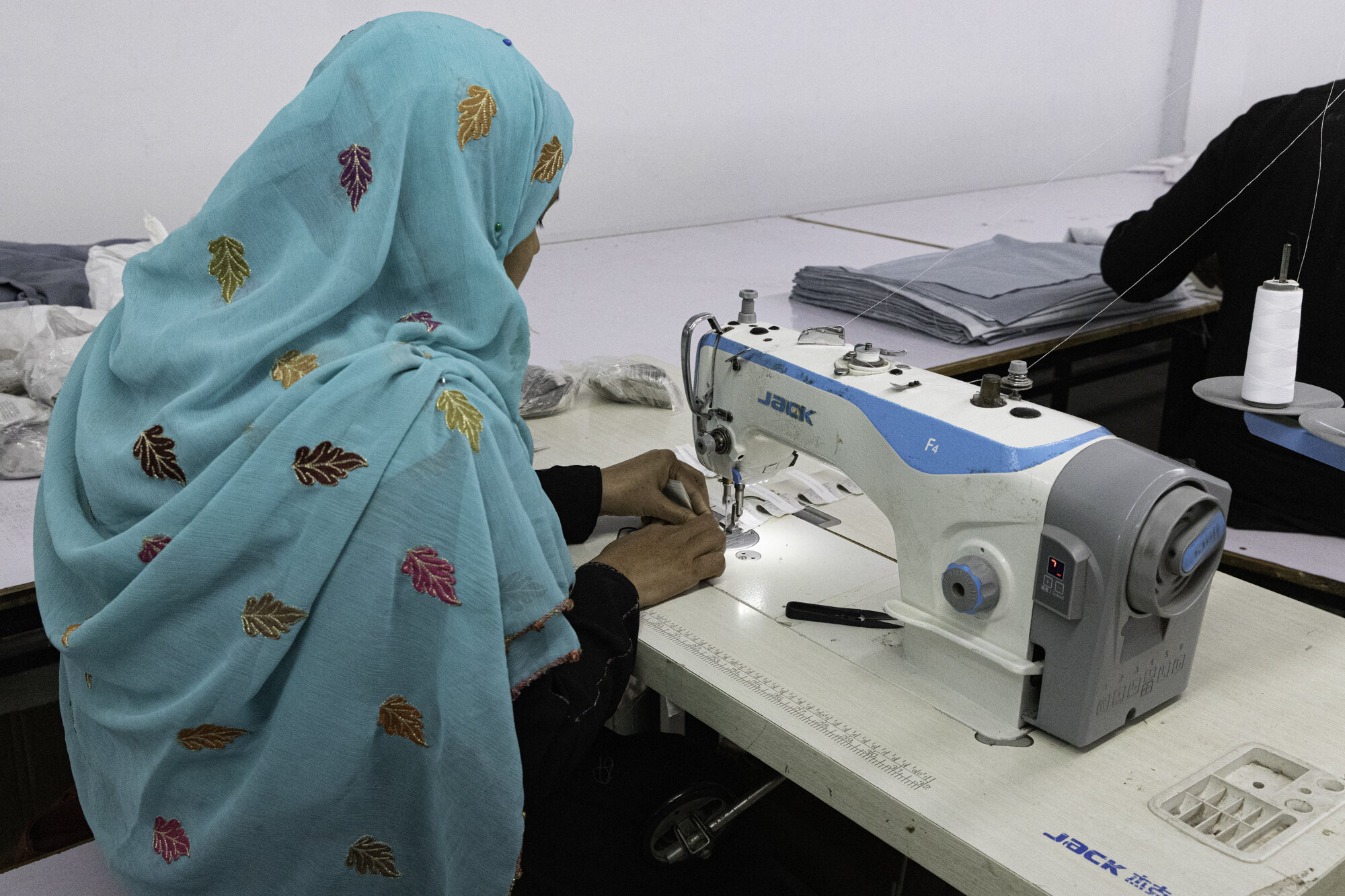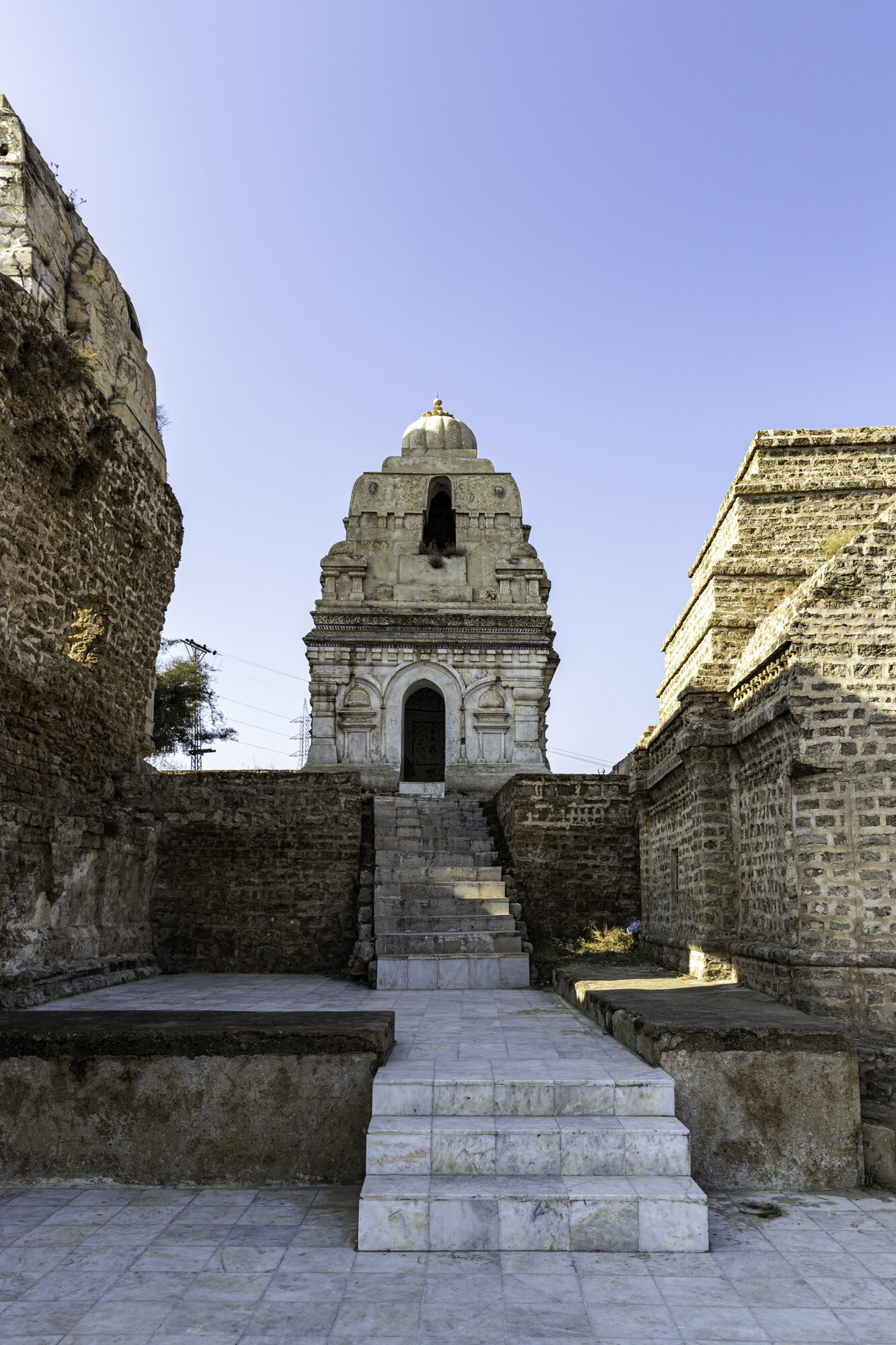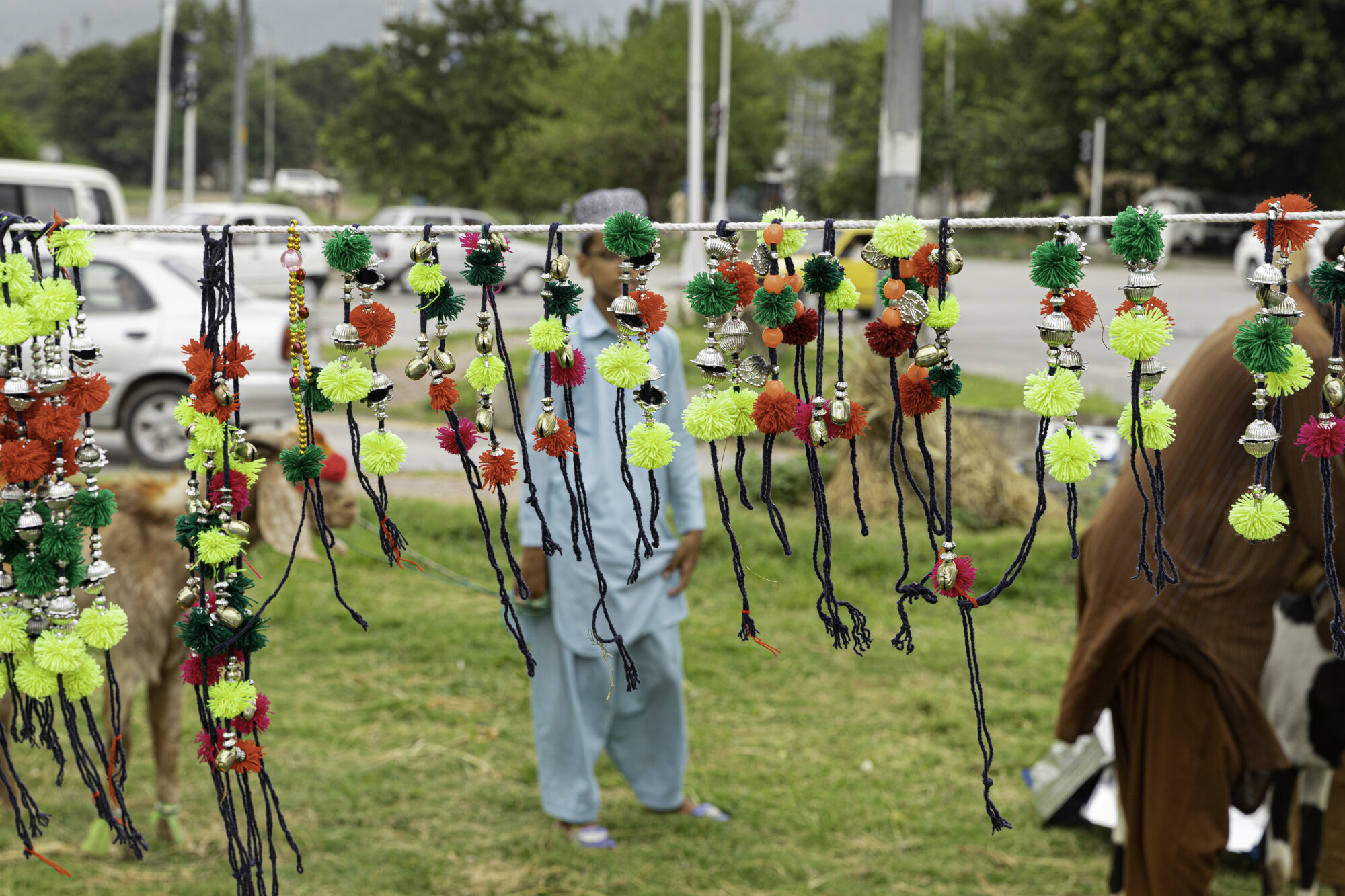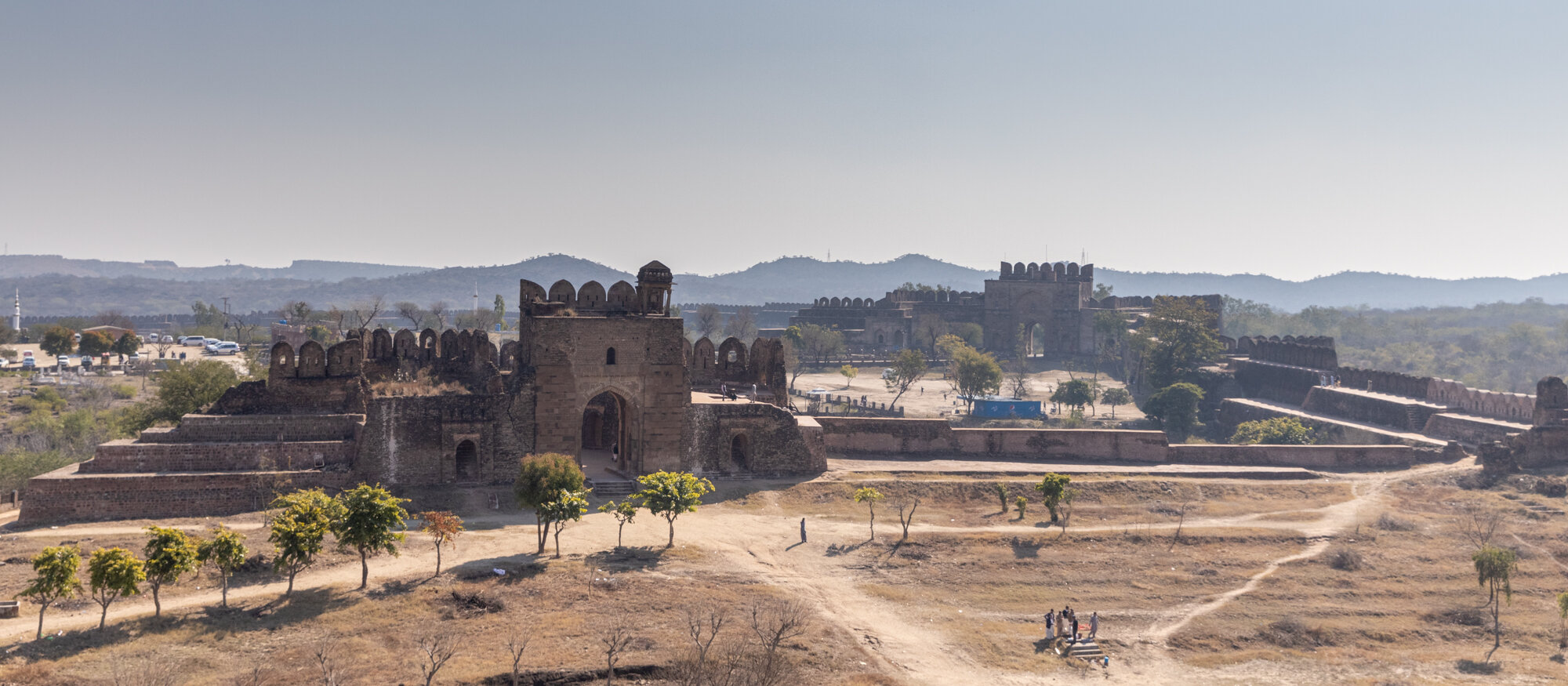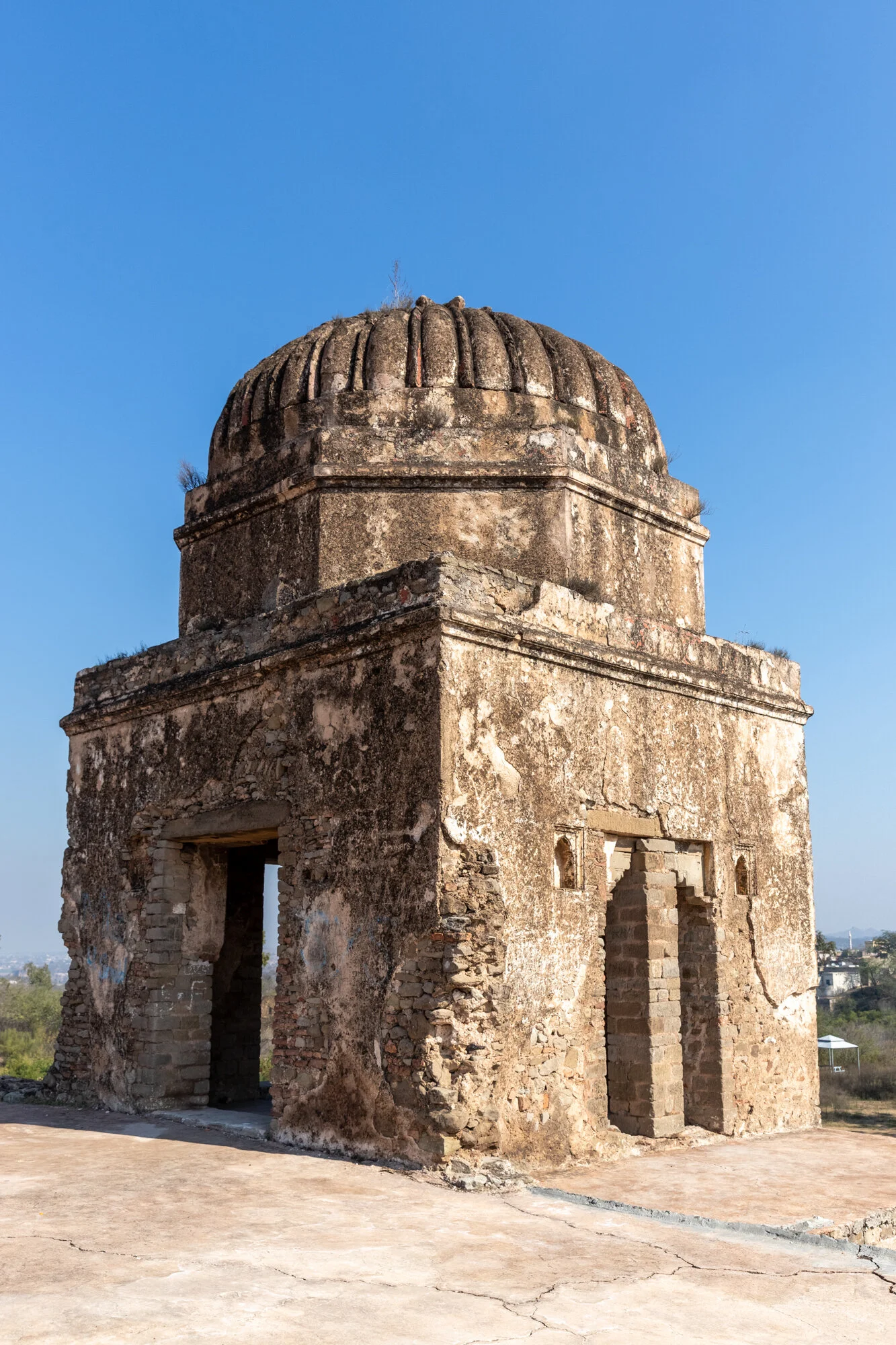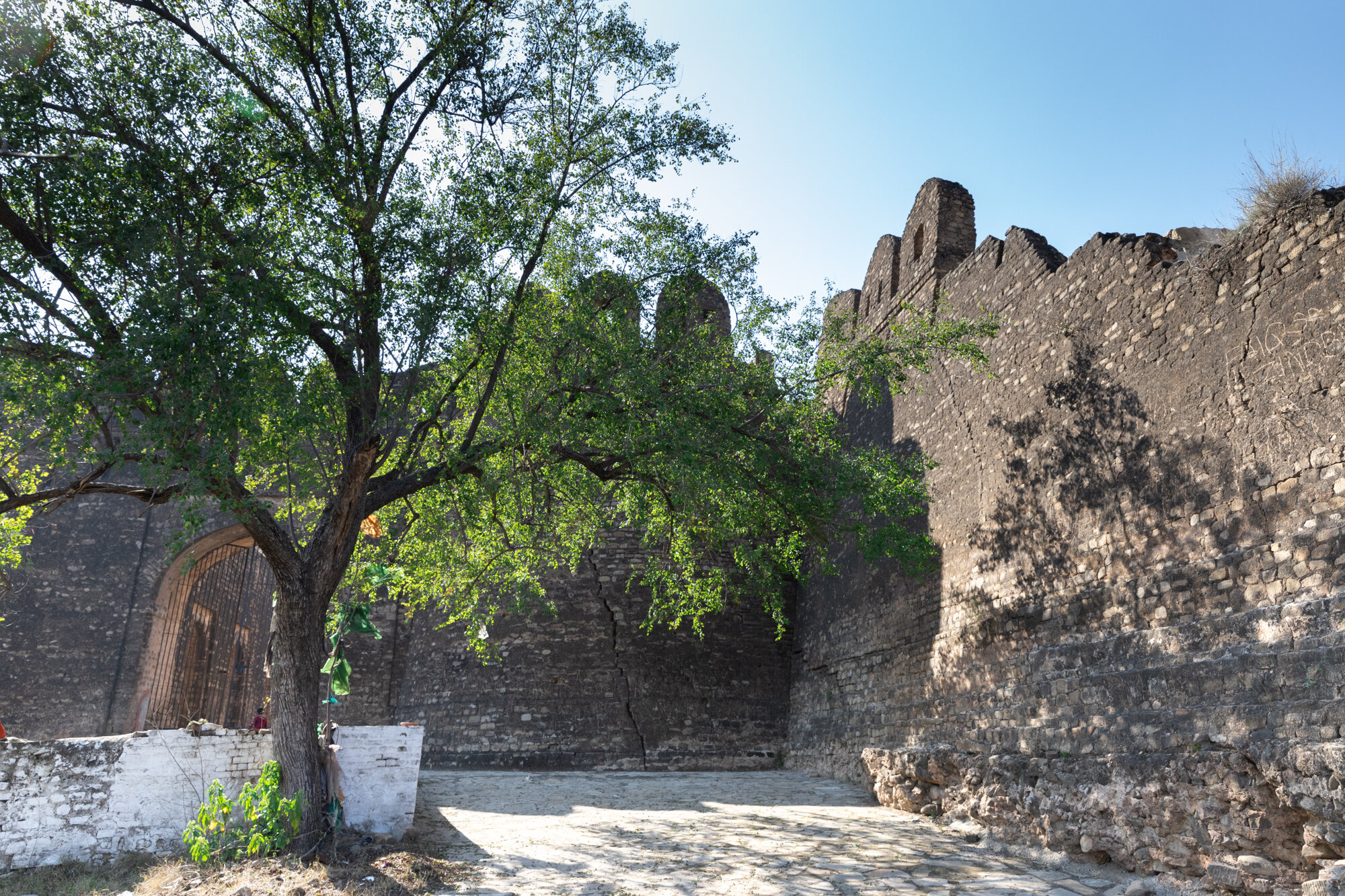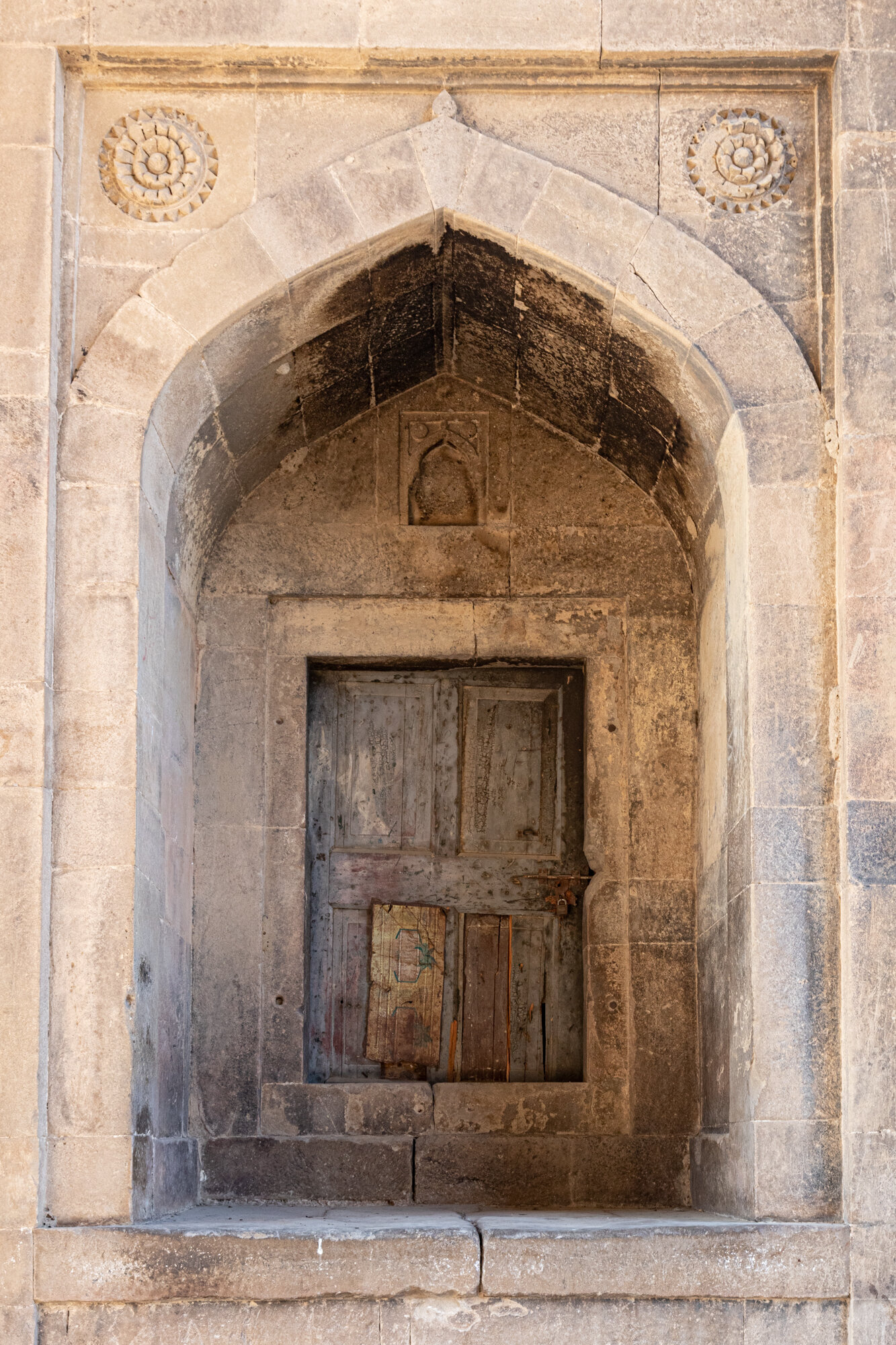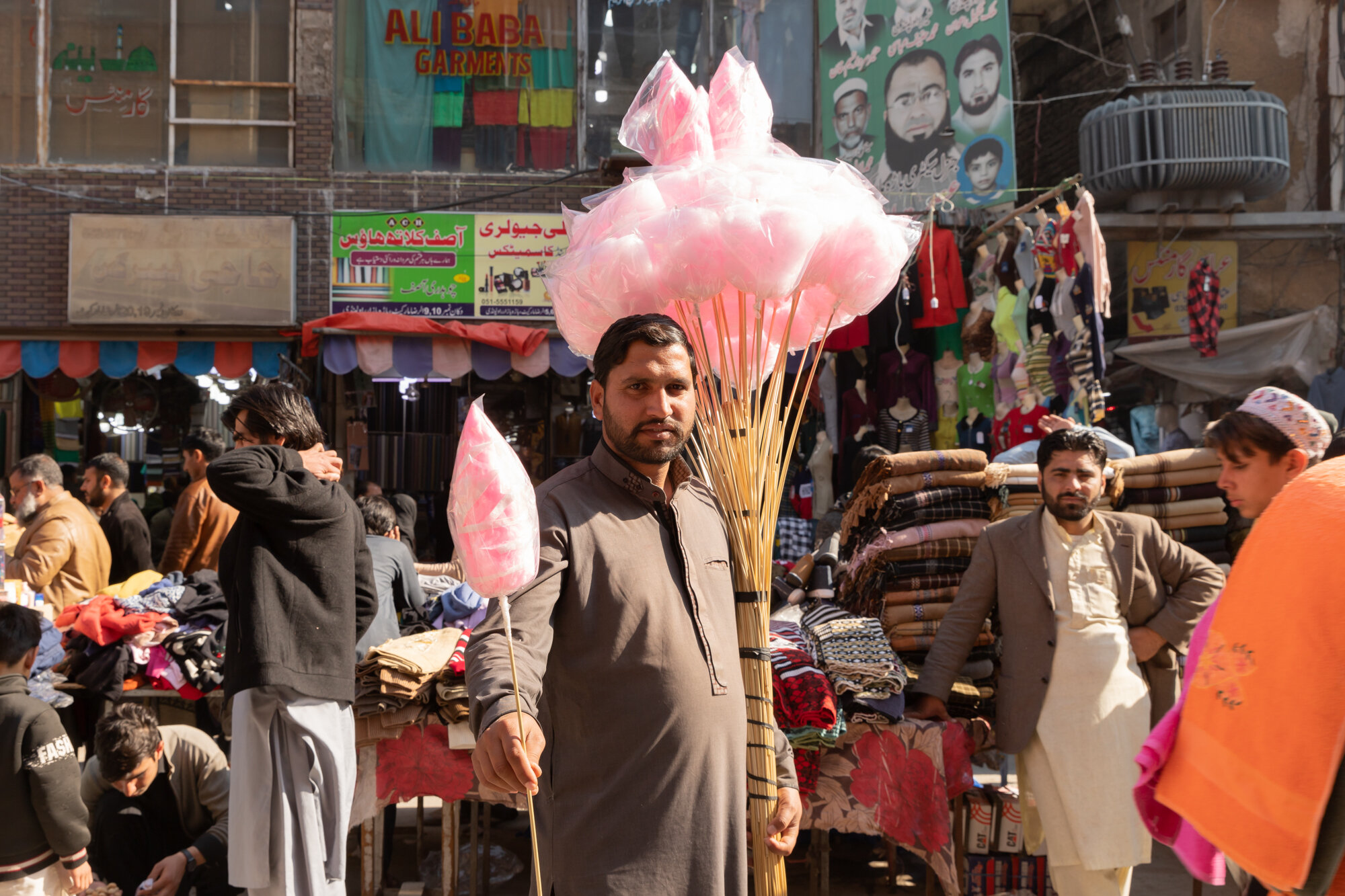Postcards from Pakistan
Postcard from Bahauddin Zakariya Shrine, Multan
We didn’t have to travel far from the shrine of Shah Rukn-e-Alam to get to our next shrine, the shrine of his grandfather, Bahauddin Zakariya. His full name was Sheikh Kabir Sheikhul Salam Bahauddin Zakariya Al-Asadi-Al Hashmi.
Bahauddin Zakariya was born in 1170AD and died in 1262AD. The shrine was built before his death and he paid for the building himself, unusual for the time. Bahauddin Zakariya founded the Suhrawardiyya order of Sufism. This particular branch of Sufism favoured close contacts with society, established trade schools and renounced austerity.
His tomb is definitely not austere. The base is a square, on top of this is an octagon, topped by a white dome with white minarets. The tomb is decorated with the traditional Multani blue and white glazed tiles, detailed woodwork, and Arabic inscriptions.
Bahauddin Zakariya has been reported to have said ‘Our Multan is comparable to Paradise – tread slowly, the angels are paying obeisance here’. You certainly feel awe as you walk around the tomb and you should definitely tread slowly around Multan, an amazing city.
Multani blue and white glazed tiles
The first time I’ve seen a pillar covered in Multani blue and white glazed tiles
Remains of Multani tiles on the outside of the shrine
Inside the shrine
Top of the dome, inside the shrine
Doorway into the shrine
Gateway into the courtyard
We stopped and listened to a man singing and playing an harmonium
Normally the entrance would be filled with people but they were kept waiting as we visited the shrine
Postcard from Shah Rukn-e-Alam (Pillar of the World) Shrine, Multan
As I rounded the corner from the bazaar the tomb of Shah Rukn-e-Alam came into view on top of the mound of an old fort. I can see why it is listed as a possible UNESCO World Heritage Site. It is an imposing three-tiered structure, surrounded by a large courtyard. The first section is an octagon with round towers at each corner, this is topped by another octagon with white tomes, topped by a 15-meter diameter white dome. The building was thoughtfully restored in the 1970’s and uses a mix of red bricks, traditional Multani glazed tiles, and shisham wood.
The tomb was built between 1320 and 1324 by Ghiyath al-Din Tughluq and was thought to have been built for his family. However, the tomb was gifted to the family of Rukn-e-Alam and his remains were moved to the shrine in 1330.
During the Tughluq period Islam spread through the region by large numbers of Sufi teachers. By the early 12th century Multan was regarded as a centre of Sufi learning. Shah Rukn-e-Alam (Pillar of the World) was a Sufi saint. He came from a long line of saints, his grandfather was Bahauddin Zakariya, I will write another blog about Bahauddin Zakariya and his shrine that is situated very close to this one. The Pakistan Foreign Minister, Shah Mehmood Qureshi, is the current custodian of the tomb.
Shah Rukn-e-Alam is still revered today and annually over 100,000 pilgrims from all over South Asia visit the shrine. I can now add myself to that number.
Shah Rukn-e-Alam Shrine seen from the bazaar
Gateway into the shrine
Traditional Multani blue and white glazed tiles
Rose petals for sale outside to scatter over the tomb
Tomb surrounded by 72 graves of his family
Decorative shisham wood panel
Lighting candles outside the shrine
View of the Shrine from the top of the Multan Museum
Postcard from Shah Yousaf Gardezi Shrine, Multan
We parked the cars next to an alley, at the end there was a wall made of rough red bricks. We walked through a modest gateway and found ourselves in Shah Yousaf Gardezi Shrine’s courtyard, outside was noisy and busy while inside was a world of quiet and prayer.
In the centre is a square, flat roofed tomb. The outside is covered in Multan’s famous blue and white glazed tiles, while inside is covered in mirrorwork, known as aina-kari. Small, finely cut mirrors are arranged in geometric and/or flowers and plants. Aina-kari is supposed to have begun in Iran however some say that Venetian artists brought the art form to Iran.
Shah Yousaf Gardezi arrived in Multan from Afghanistan around 900 years ago. The story is that he arrived riding a lion and holding a live snake with pigeons flying overhead. Gardezi is said to have brought the Twelver Branch of Shia Islam to the city. Shah Yousaf Gardezi died in 1136 and his tomb is recorded as having been originally built in 1152, rebuilt in 1548.
As we walked around the shrine the evening call to prayer started. Pigeons took off in flight around the tomb and settled in and around the tomb. I think Shah Yousaf Gardezi would be pleased that the pigeons are still there.
Outside the main entrance to the tomb
Inside the tomb
Example of aina-kari inside the tomb
Close up of aina-kari
Tomb ceiling
Multani blue and white tile work
Close up of tile work
I like to imagine when this tree was planted and how many people have walked past and sat underneath
Close up of decorative tile work
Walking around each side of the tomb
Inside the courtyard
Courtyard
Fresh rose petals scattered over a grave
Lighting of candles at prayer time
Life in Multan - Sohan Halwa
While I was enjoying just wandering around Hussain Agahi Bazaar taking photos I was also on the lookout for a special shop – Hafiz Ka Multani Sohan Halwa. This is a family run store that has been making halwa for over 80 years. In 1930 Hafiz Ahmed Din taught the Quran and made halwa for his students. Others soon started asking for the sweets and so a business was started. It is still a family run store with award winning sweets that are highly sought after.
Of course, I bought some halwa and patiently waited, unlike like me, until I got home to try some. So delicious! The sweets come in bright tins that are beautiful too. Now I realise that you might not be able to travel to Pakistan, let alone get to Multan. It would be a little mean of me to talk about a delicious sweet that you might never get to taste. So, I have included a recipe for halwa. Unfortunately, this is not the award winning recipe from Hafiz Ka Multani but still very delicious. Enjoy with a cup of chai (see my other blog – Life in Lahore – Chai - for that recipe too).
Sohan Halwa Recipe
Ingredients
1 cup cornflour
1 cup almonds
½ cup pistachios
1 tbsp lemon juice
3 cups sugar
½ cup milk
8 tbsp ghee
2 tbsp ground cardamom
Method
1. Blanch nuts in hot water for 5 minutes, drain, peel, and slice finely.
2. Dissolve sugar in 2 cups of water and boil for 5 minutes. Add milk and boil for another 5 minutes. Remove from heat and strain through a muslin cloth.
3. Dissolve cornflour in 2 cups of water and add to sugar/milk mixture.
4. Cook on medium heat until it forms one lump, add lemon juice.
5. As the mixture starts to stick to the bottom of the saucepan stir in small amounts of ghee.
6. When all the ghee has been added stir in the ground cardamom and two thirds of the nuts.
7. Press the mixture into a greased tin and decorate with remaining nuts.
8. Cool in fridge.
9. Cut into squares and enjoy!
Happy to have found the store in the bazaar and to meet the helpful, friendly people that work there.
Lots of tins to choose from or you can buy by the slice.
Photo of Hafiz Ahmed Din and awards
Beautifully presented tins of sohan halwa
Multani sohan halwa on traditional Multani blue and white pottery.
Postcard from Hussain Agahi Bazaar, Multan
As a photographer there is no better place to visit than a bazaar. Bazaars in Pakistan are crowded, noisy, and full of interesting people, food and things. The Hussain Agahi Bazaar in Multan is no exception.
The bazaar is named after the saint Hazrat Syed Hussain Shah Bukhari, shortened to Hussain Agahi. The story is that the saint was an astute businessman and that he helped many others and all their businesses did well. So, what better name to give the bazaar than a saint with business acumen!
I entered the bazaar at the Hussain Agahi Chowk (crossroads) and the very first store I saw sold wedding decorations. The shop sells fresh flower garlands through to mirrored centrepieces, all in bright, vibrant colours. There are stores selling gold, fabric and kitchenwares. I enjoyed watching food being prepared, the smell of frying samosas, chicken skewers being cooked over a small charcoal bbq and sweet cakes being carried around the bazaar. I was also on the hunt for the Multan speciality of sohan halwa but this will be the subject of another blog.
Walking through the bazaar was a little perilous at times with motorbikes zipping past groups of shoppers. Every time I thought there was going to be an accident the bike managed to weave past at the last second without incident.
From food to fashion, teddy bears to tailors, the Hussain Agahi Bazaar is a must see in Multan.
Life in Multan - Cotton
Cotton quality checking
While in Multan we visited the Roomi spinning and weaving factory. The factory has received funding from Australia in the past under the ‘Better Cotton Initiative’. We were able to see the process from receiving cotton bales through to packaging of towels and sheets. It was fascinating to see the work that needs to be done by hand and what can be done by machine.
Pakistan used to be the fourth largest grower of cotton and the largest exporter of cotton yarn. However, cotton production in Pakistan is decreasing, in the last year production has dropped by 24%. The main reason for the decline is attributed to poor cotton seeds that are not resistant to pests and diseases. Cotton is of vital importance as textile manufacturing is the largest manufacturing industry in Pakistan.
Cotton bales
Hand checking
Yarn quality control
Tags for towels
Checking for loose threads
Postcard from Kallar Kahar
Kallar Kahar
A welcome stop on our way from Islamabad to Multan was Kallar Kahar. Our first stop was to visit Takht-e-Babar, the throne of the first Mughal Emperor, King Babar. The throne was cut out of a block of stone so that King Babar could address his army on the way from Kabul to Dehli in 1519 AD. The throne overlooks Kallar Khar Lake. This lake is a saltwater lake, spread over 8 kilometres and is filled with birdlife. We then stopped to see the Shrine of Abdul Qadir Gilani and the Peacock Shrine. On the way up to the shrine you can stop at the many shops selling rosewater to sprinkle on the tomb. I’m sorry there are no photos of peacocks as we decided against taking the very small cable car up to the top of the hill. Instead I practiced my Urdu with two charming women who graciously agreed to have their photos taken.
Takht-e-Babar
Kallar Kahar Lake
Cable car across to the Peacock Shrine
On the road up to the shrine selling drinks, food and rosewater
Shrine of Abdul Qadir Gilani
At prayer
Truck Art
Ever since I arrived in Pakistan, I have admired the amazingly vivid art that is displayed on trucks, rickshaws, buses – commonly known as ‘truck art’. Trucks are highly decorated using pictures and calligraphy that either remind the drivers of home or advertise a company. Decorations include painting, mirror work, bells, fake flowers, tinsel and flags. The trucks are also known as ‘jingle trucks’ thanks to the many bells attached to the bumper bars.
The artwork started in the 1920’s with the import of British Bedford trucks. The Bedford trucks had a high crown behind the driver’s cab and detailed woodwork on the crown, truck bed, sides and bumpers. Artists started painting the woodwork and the more decorative the truck the better the business. Drivers can spend a lot of money, up to two year’s salary, decorating their trucks and competing with other drivers.
On each truck you will see so many stories being told – landscapes with soaring mountains, eagles with outspread wings, ferocious tigers, dancing horses, flowers, peacocks and hearts. Local artists, telling local stories, travelling across the country in the brightest possible way.
Postcard from Katas Raj Temple
Katas Raj is a Hindu Temple complex located about two hours outside of Islamabad, near Chakwal in the Punjab province of Pakistan.
Katas Raj is a series of temples, shrines and fort, dating from around 615-950 CE, built around a pool that is sacred to Hindus and is dedicated to the Hindu god Shiva. Katas comes from a Sanskrit word, Katisksah which means ‘raining eyes’. It is believed that the pool was formed when Shiva wept over the death of his wife.
The temples are built in a Kashmiri design from the Karhota and Varma dynasties. Most are built on a square base, with pillars, trefoil arches and floral and animal motifs.
Prior to the Hindu Temples being constructed the site was known for a Buddhist stupa, remains of the stupa can still be seen today. The complex fell into disrepair following Partition. In 2005 Pakistan agreed to begin restoring the site. The temples are considered to be one of the most important Hindu pilgrimage sites in Pakistan.
Life in Islamabad Eid al-Adha - Feast of Sacrifice
Australian Photographer in Pakistan
Goat decorated for Eid al-Adra
Today is Eid al-Adha, the feast of sacrifice or the Greater Eid, that falls on the 10th day of Dhul Hijjah, the last month of the Muslim calendar.
For the last couple of weeks animal markets have suddenly appeared all over Islamabad. As well as traditional animal markets, temporary, smaller markets appear in vacant lots and alongside roads. The markets have goats, sheep, cows and camels and everything you need from food to decorations. These animals will be sacrificed on Eid al-Adha. It is estimated that across Pakistan between 8 to 10 million animals will be sacrificed over this holy day.
If you know your Quran or Bible you will know the story of Abraham (Ibrahim) and Isaac (Ismael). If you don’t then here is a quick summary. God asked Abraham to sacrifice his son Isaac. Abraham was willing to follow God’s commands but before he sacrificed his son God provided a ram for Abraham to sacrifice in Isaac’s place. That is why on Eid al-Adha a sheep (or goat, or cow or camel) is sacrificed. The meat is then divided into three parts: one for the poor, one for relatives and one for home.
Wishing you all Eid al-Adha Mubarak - Blessed Feast
Small goat market, Islamabad
Temporary goat market, Islamabad
Decorations for your animals, Islamabad
Decorated goat for sale, Islamabad
Larger decorations for cows and camels, Islamabad
Food for your animals, Islamabad
Goats, temporary road side market, Islamabad
Camel, temporary road side market, Islamabad
Newspaper supplements, a goat would be the equivalent of approximately $A210
Postcard from Pakistan - Margalla Hills
Australian Photographer in Pakistan
Instagram gaynor.shaw.photography
The winding road up to the top of the Margalla Hills, Faisal Mosque in the distance.
On the weekend we enjoyed a drive up into the Margalla Hills. It was lovely to be outside Islamabad and enjoying the cooler temperatures. In Islamabad at the moment it is around 35-40 degrees each day. At the top of the Margallas it was 25 degrees with a constant breeze.
You can hike in the Hills and there are many different trails. Due to the virus there have been less people using the trials and there has been a corresponding increase in the sightings of leopards and jackals. We didn’t see any (shame) but did see many different birds and monkeys. We were also warned about the many snakes on the trails. One story has it that the name Margalla comes from the Persian for snakes ‘mar’ and galla ‘herd’.
The Margallas are part of the Himalayan foothills and reach an elevation of 1604m. It was wonderful to see the hills rising into the distance. Hopefully one day, when we can travel again, we can follow the hills up into the north of Pakistan.
Great spot for a house, Islamabad in the distance
Near the top, Islamabad under a blanket of haze
The Hills are covered in pine trees, the pine needles a blanket of red.
From red pine needles to bright, lime green, new growth.
A local woman, returning home from the mosque, graciously stops to have her photo taken.
Looking north-west, the other side of the Margallas.
A final photograph before we head home.
Life in Islamabad - Chana Chaat
Australian Photographer in Pakistan
Instagram @gaynor.shaw.photography
IFTAR RECIPE – CHANA CHAAT
Ramadan (or Ramazan or Ramzan) in Islam is the ninth month of the Muslim Calendar. This year is lasts from April 24 to May 24. It is a time of fasting, prayer and reading of the Quran. It is also a time when you get together with your family and friends, cook special food and give donations to the poor.
During Ramadan Muslims fast from sunrise to sunset. Muslims will eat a pre-dawn meal of suhur ‘of the dawn’ and the second meal of the day is iftar ‘break of a fast’, eaten after sunset.
There are many special iftar recipes. This is one of our favourites. Let me know if you like it too.
Chana Chaat
Ingredients:
Two cups of dried chickpeas
One onion
One tomato
Handful of coriander
One tablespoon of Chaat Masala (Pakistani spice mix) see note*
Two lemons
Salt
Method:
1. In a saucepan put 4 to 5 cups of water, pinch of salt and the two cups of chickpeas. Cook until tender. Drain.
2. Finely chop the onion, tomato and coriander (keep a little aside for presentation).
3. In a large bowl, add all ingredients including half a tablespoon of chaat masala.
4. Squeeze two lemons, add to the bowl, mix until well combined.
5. Refrigerate for at least 30 minutes.
6. When ready to serve, toss the chana chaat once more, sprinkle with remaining chaat masala and top with remaining coriander.
*Note
If you can’t find Chaat Masala you can substitute with Garam Masala and add some extra lemon juice to the mix
Life in Islamabad - time to smell the roses
Australian photographer in Pakistan
Instagram @gaynor.shaw.photography
During these difficult Covid-19 times I am trying to stay home and thought I should use the time to practice some macro photography. I am very fortunate to have a wonderful garden, looked after by some excellent gardeners. In English we have a saying that to be able to grow plants well you have a ‘green thumb’. I have no such skill, in fact my boys say I have the exact opposite a ‘black thumb’!
A couple of months ago my gardeners took me to some local nurseries in Islamabad to pick plants for the garden to make sure it looked it’s best in spring. Nurseries here are not like nurseries back home. Back home every pot contains a label with a picture so that you know what the plant will look like once grown, information on where and when you should plant it, how much water it requires and what type of soil it likes. There were no such labels here. I did see one label that said petunias - at least I knew what a petunia looked like. Instead each nursery had a team of knowledgeable people and I also had the encyclopaedic knowledge of my gardeners. In depth discussions were held and plant choices made. I was no help in the decision making but it was very nice of everyone to try and include me. I wandered around with my camera enjoying the experience. After days of rain I was happy to see the sun come out, washing being hung out to dry and plants shining with raindrops.
There is a cliché that says ‘stop and smell the roses’. The original quote is from Walter Hagen who said ‘You’re only here for a short visit. Don’t hurry, don’t worry. And be sure to smell the flowers along the way”. These seem to be apt words for our current times.
Petunias!
Dahlia
Banyan Tree
Life in Lahore - Chai
Australian Photographer in Pakistan
Instagram @gaynor.shaw.photography
While walking around inside the old walled city of Lahore I came across a man making chai. Chai is very important to Pakistanis and everyone has their own, best ever, recipe. I have included a recipe for chai below. Traditionally it is made with full fat milk and Pakistanis love their chai with lots of sugar but you can try it without sugar and any milk you prefer. However, don’t skip the ladling part as this enhances the flavour and makes it a little frothy. Enjoy!
Pakistani Chai for four people
Ingredients
4 tsp black tea
2 ½ cups water
2 cups full fat milk
4 cardamon pods
Lots of sugar to taste
Method
1. Bring the water up to boil then add tea leaves and cardamon pods, reduce heat to medium and simmer for a couple of minutes.
2. Add milk and bring back up to a boil, take off the heat and ladle the tea up high to allow lots of air – see photo above for how to ladle and pour the tea from on high. Repeat this step a couple of times to develop the flavour. Do not take your eyes off the tea as it can quickly boil over.
3. Strain the tea into cups.
4. Add sugar to taste.
Postcard from Lahore - Wazer Khan Mosque
Australian Photographer in Pakistan
Instagram @gaynor.shaw.photography
A number of weeks ago, when you could still travel around Pakistan, we visited Lahore. This was my first visit to Lahore and I can see why visitors return again and again. Lahore was originally the capital of Pakistan and has a long and varied history. Hindu, Buddhist, Muslim, Mughal, Afghan, British, Pakistan - each new arrival leaving an interesting layer of culture, history, art and religion.
Lahore has a walled inner city and the Wazer Khan Mosque is near the Delhi Gate. The mosque was built in 1634-41 AD during the reign of Mughal Emperor Shah Jahan. The mosque courtyard floor has detailed brickwork. The walls and ceilings are covered in tile work known as ‘kashi-kari’ and detailed frescoes with calligraphy, flowers and geometric designs.
Outside noisy, daily live continued, food vendors called out to people walking by, the narrow streets busy with motorbikes, carts and rickshaws. However, inside the courtyard it was peaceful, a place to slow down, pray and contemplate life. As a photographer I loved the building’s details, small, richly coloured ceramic tiles, peeling paint revealing layers beneath, intricate designs of flowers. I also loved seeing how the space is used today. People came to pray, food was being prepared, washing was being done on the roof.
The mosque has been listed as a possible UNESCO World Heritage Site. Restoration work has been ongoing since 2009 to try and save this incredible piece of history that is still in use today and hopefully for many more years to come.
Postcard from Taxila - Orange Festival
Australian Photographer in Pakistan
Instagram @gaynor.shaw.photography
Every year in late February an orange festival is held in Taxila, Punjab. February is at the end of the orange season and a festival seems like a great way to celebrate a wonderful harvest. It was my first time at an orange festival and so apart from lots of oranges I didn’t know what to expect. I should have known that oranges would play a role but that music, entertainment and food would be key.
The festival started with horse dancing, a traditional way of celebrating success. A double headed drum, a dhol, plays the main beat as the horse dances. Another traditional form of entertainment is stone lifting, known locally as ‘watee’ or ‘gutti’ lifting. The stones are made of solid granite, 80kg, 100kg and 120kg each. The stone is lifted in one fluid motion onto their shoulders and thrown behind them. The program also included the less traditional entertainment of orange squeezing and musical chairs for adults.
Taxila is a UNESCO world heritage site and is an area rich in tradition, culture and history. The orange festival was a great introduction to some unusual Pakistani traditions.
Postcard from Islamabad - Faisal Mosque
Australian Photographer in Pakistan
Instagram @gaynor.shaw.photography
Faisal Mosque, Islamabad
Inspired by the shape of a bedouin tent, at the foothills of the Margalla Hills, Faisal Mosque is a dramatic, contemporary piece of architecture. The mosque was designed by a Turkish architect, Vedat Dalokay. The surrounding four minarets are 79 metres tall. The mosque can accomodate 10,000 worshippers and is the largest mosque in Pakistan and the fourth largest mosque in the world. Unfortunately we couldn’t go inside the mosque but as we looked through the windows we could see the amazing interior with mosaics and calligraphy by Pakistani artist Sadequain.
The mosque is surrounded by a large courtyard and park, attracting many worshippers and visitors. When we visited the park and courtyard were full of people having picnics and meeting friends. As a sign of respect I covered my head and we left our shoes with an attendant at the front entrance. Many people wanted to know where we were from and why we were visiting. I’m so glad we visited, both to see the incredible architecture but we also met some wonderful people.
Life in Islamabad - meet the miller
Australian Photographer in Pakistan
Instagram: @gaynor.shaw.photography
I have been very keen to learn to shop like a local. There are supermarkets and shops that look a lot like Australia but where is the fun in that?
A friend shops at a small place in Gulshan Market that sells flour, rice and pulses. She invited me to come along with her and was told to bring my camera as it is an interesting place. We went to buy a large bag of rice where first you pay for your purchase at a small window next to the store room and then you wait for your order to be filled and weighed.
Flour is milled at the shop to your requirements. Large or small amounts can be bought. The shop was filled with a fine dust that drifted down and the miller’s eyelashes, eyebrows and hands matched his naturally white beard and hair.
My visit to the shop coincided with increasing flour prices across the country. This is making life difficult for locals and many small businesses that need flour to make daily items such as chapati and naan.
Visit Atta Chakki Brothers, Gulshan Market, G7/3/2, Islamabad. Bring cash and camera.
Postcard from Punjab - Rohtas Fort and the Lion King
Australian Photographer in Pakistan
Rohtas Fort, Jhelum, Punjab, is about a two hour drive south of Islamabad. We arrived there early at 11am (this is considered early in Pakistan) and there were relatively few visitors. It was also a good idea to go in winter as it would be terribly hot walking around in summer as there is little shade.
Built in the 16th century at the request of Sher shah Suri ‘The Lion King’ Rohtas Fort took approximately ten years to complete. It was built between the mountains of Afghanistan and the Punjab plains to stop the advances of Murghal Emperor Humayun. It is now a UNESCO heritage site.
The site is large, over twelve acres, and a lot of the fort remains in various states of repair. There are four kilometres of wall, twelve gates and 68 bastion towers. There is a shorter inside wall walk that took us around 2 hours, allowing for photo opportunities and climbing up and down some very steep stairs. You can also do a longer outside wall walk.
Never attacked, now protected, a must see piece of history.
Shah Chandwali Gate
Our wonderful guide, Mohammed
Shah Chandwali Gate and view of Haveli Man Singh
Wall and battlements
View of outside wall
Steep steps lead up to battlements
View of Shah Chandwali Gate from food storage area
Haveli Singh
Shahi Masjid - merlon shaped battlement detail - design means ‘Allah’
Interior Shahi Masjid
Haveli Man Singh
Inner courtyard and wall
Rohtas town
Detail of Sohail Gate balcony and brackets.
Detail of Sohail Gate doorway
Sohail Gate
Postcard from Rawalpindi - Raja Bazaar - chaotic, colourful, with candy floss
Australian Photographer in Pakistan
Instagram @gaynor.shaw.photography
On a glorious winter’s day a group of us headed off to Rawalpindi to visit the Raja Bazaar. Pindi (as the locals call it) is a short 30 minute drive, on good roads, from Islamabad. Islamabad and Pindi could not be more different. Pindi is noisy, busy and very colourful - a photographers paradise. There are so many shops, taxis, rickshaws, buses, carts, motorbikes, and people, lots of people. Pindi has a population of over 2 million and it seemed that everyone single one of them was at the Bazaar with us!
Raja Bazaar is the oldest bazaar in Pindi and covers many smaller bazaars. Areas within the bazaar cover everything from clothing to electronics to food to car parts. We visited the clothing district and walked along narrow alleys that became even narrower, that twisted and turned, up stairs and down stairs. It was good going with someone who knew their way around as it would have been very easy to get lost. It would also be very easy to lose track of time as you admire all that’s on offer, look for bargains and talk to the friendly store holders.
Go early in the morning to avoid the crowds, wear comfortable shoes and get ready to haggle for a bargain.











